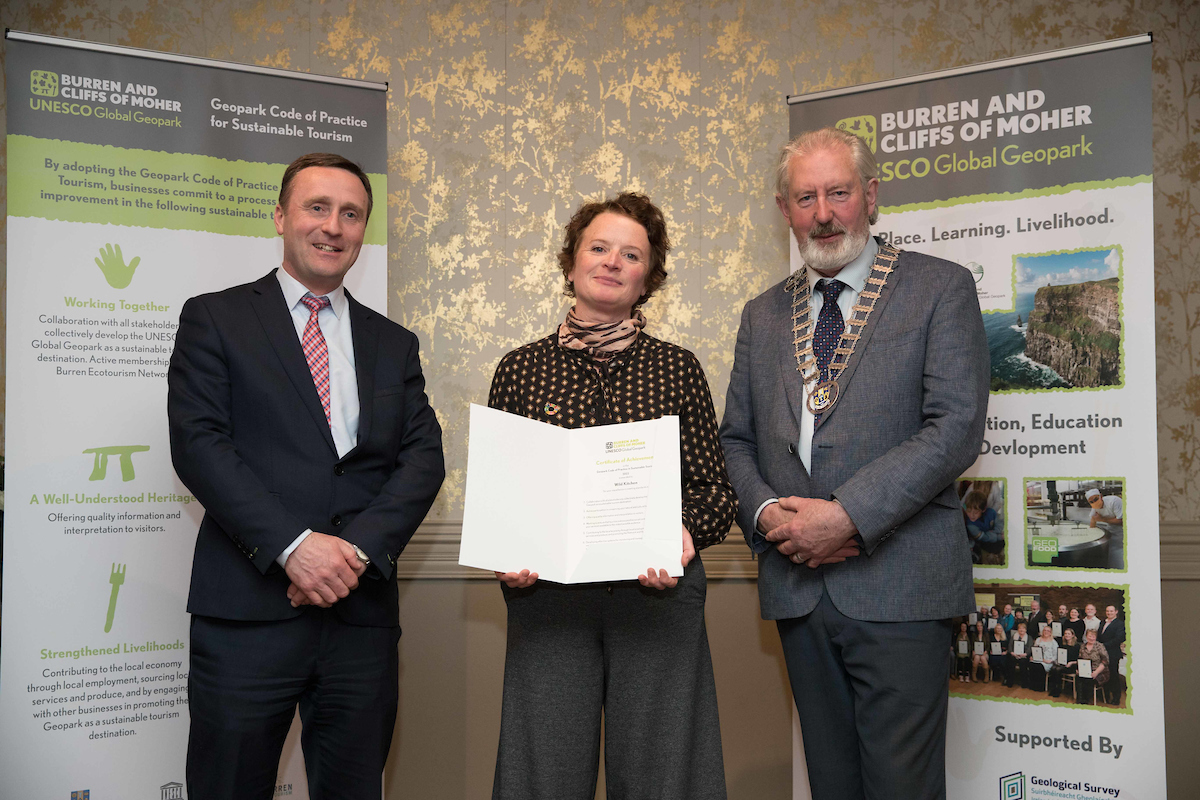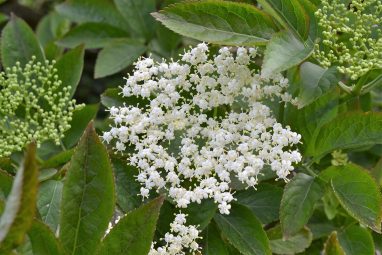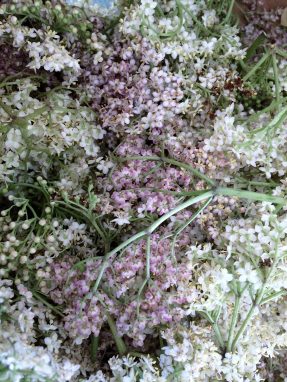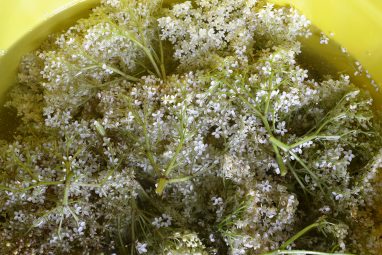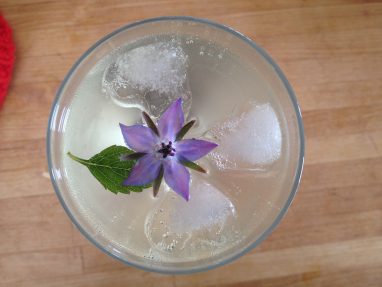Wild Kitchen is a family-owned, small scale artisan producer of small-batch wild food products that are seasonal and sustainably sourced and grown. Located near Lahinch to the South of the Burren and Cliffs of Moher UNESCO Global Geopark, they grow an organic range of vegetables, tunnel crops, wild food flowers and plants which are sold at seasonal markets and Food Fayres in the Geopark region. They are a business that follows the Geopark Code of Practice for Sustainable Tourism, and they pride themselves on using recyclable and compostable packaging for all their picnics and products. The head of the family, Oonagh O’Dwyer, is a passionate environmentalist and provides training in ‘Biodiversity for Businesses’ for the Geopark Code of Practice.
Story
The Elder is a native Irish Tree, Tromán as Gaeilge Sambucus nigra, in Latin. It is common in the countryside and often found near old farmhouses and is often associated with badger setts. The fruit and flowers have many medicinal benefits, as the berries are a rich source of Vitamin C and the flowers are made into cordials and alcoholic drinks. The pithy stems are hollowed out and made into whistles. In nature, such hollow branches provide nest chambers for bumblebee larvae and shelter for hibernating insects.
The Elder was connected with magic. The Elder-tree or earth mother, lived in the tree and watched over it. If an Elder chose to grow in your garden, it meant that the mother had chosen to protect you, and you must not cut it down (without permission) or burn it. It was also cultivated in gardens for the same reasons.
Used in magic and medicine and highly respected it is a beautiful tree when in flower and has so many uses, the Victorian ladies even used the berries as hair dye! Berries for wine, desserts, jams and jellies. Flowers for drinks, salads, desserts and can be dried for tea.
The Land
Wild Kitchen farm is located on a bedrock of sandstones and shales. Its soils are mostly developed on local glacial material, with additional material such as limestone, granite and quartzite transported by the ice sheets from the North around 20,000 years ago during the peak of the last Ice Age. The rounded hilly topography of the area is a drumlin field with peaty soils in the low-lying areas. The drumlins are little hills of glacial drift and were formed as the large ice sheets melted around 18,000 years ago. The proximity to the Atlantic coast means that seawater spray will contribute sodium chloride and other minerals to the soil.
Sustainable Practice
The owners are longstanding members of the Burren Ecotourism Network of sustainable tourism businesses and adhere to the Geopark Code of Practice in Sustainable Tourism.
For more information on Wild Kitchen, and their produce, visit www.wildkitchen.ie
